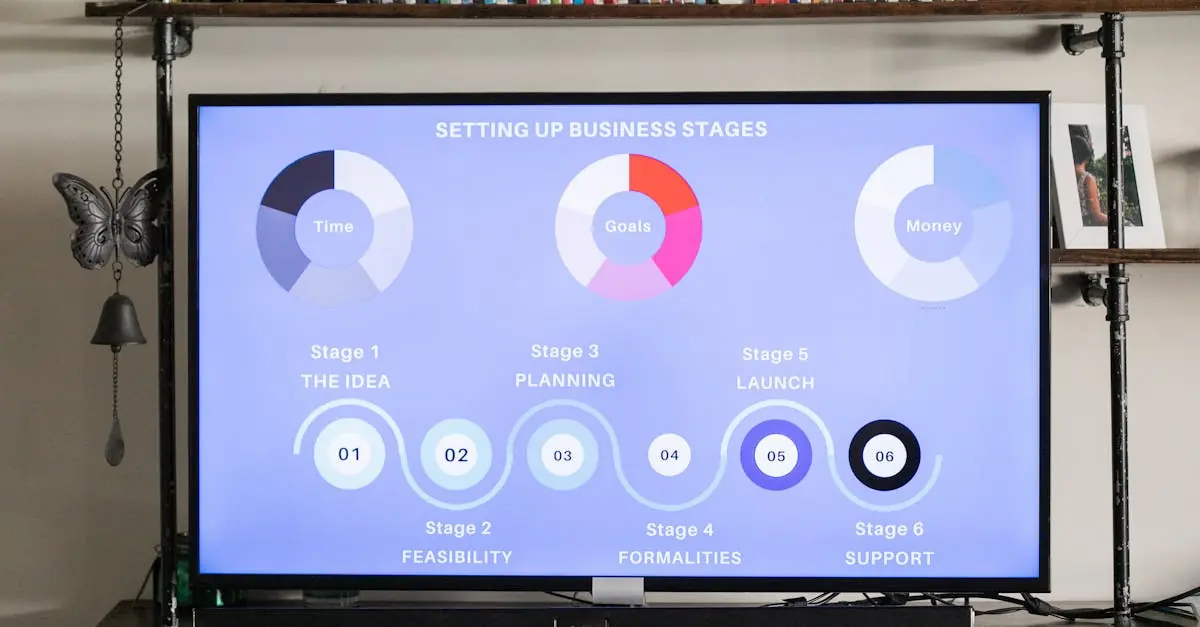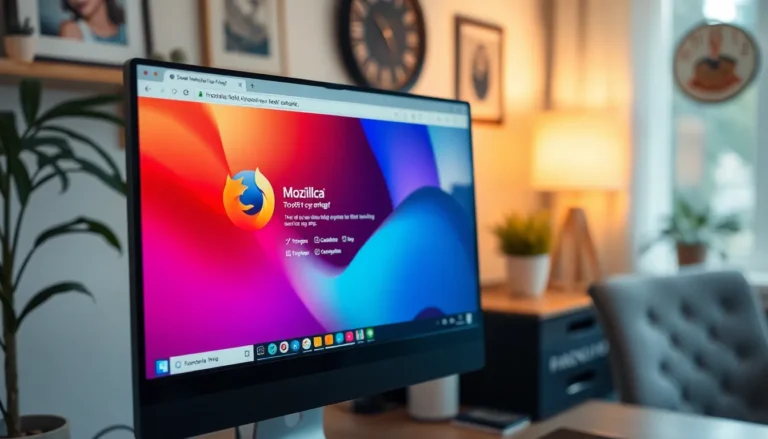Table of Contents
ToggleIn today’s digital age, screen time is as common as coffee breaks and cat videos. But how much is too much? Enter the screen time chart, your trusty sidekick in the battle against endless scrolling and binge-watching marathons. It’s not just a colorful graph; it’s a wake-up call wrapped in pixels, helping people take charge of their digital habits while keeping their sanity intact.
Imagine this: a clear visual guide that shows how many hours are spent glued to screens each week. It’s like a fitness tracker for your eyeballs! With the right screen time chart, anyone can easily spot trends, set limits, and even reclaim those lost hours for more productive pursuits—or at least some quality time with a good book. So, let’s dive into the world of screen time charts and discover how they can transform digital lives, one pixel at a time.
Understanding Screen Time Chart
A screen time chart provides a clear overview of digital usage patterns. This tool helps individuals visualize their screen time, allowing them to recognize habits and make informed adjustments.
Definition of Screen Time Chart
A screen time chart is a visual representation of daily or weekly screen usage. It displays hours spent on devices, such as smartphones, tablets, and computers. By categorizing activities, users can differentiate between productive tasks and leisure time. Tracking these metrics enables users to identify excessive use in specific categories over time. A well-structured chart often includes color-coded segments to simplify interpretation.
Importance of Tracking Screen Time
Tracking screen time maintains awareness of digital habits. Awareness promotes healthier routines and reinforces productivity. It helps identify trends, such as peak usage times or favored activities. Establishing limits becomes easier when users recognize excessive screen time. Additionally, monitoring screen usage encourages a balance between digital engagement and real-world interactions. This process ultimately supports improved mental well-being and enhances the overall quality of life.
Types of Screen Time Charts
Screen time charts come in various formats to effectively track digital usage. Two common types are the daily and weekly screen time charts. Each serves distinct purposes to help individuals manage their screen time efficiently.
Daily Screen Time Chart
A daily screen time chart tracks digital usage hour by hour. It enables users to see specific activities throughout the day. For example, splitting time into categories such as work, social media, and gaming helps individuals identify areas where they spend excessive time. By viewing daily patterns, users can adjust their habits on a more immediate basis and set targeted goals for improvement.
Weekly Screen Time Chart
The weekly screen time chart offers a broader perspective on digital habits. It aggregates data from each day, allowing users to identify trends over an entire week. This overview facilitates better understanding of weekly screen time distribution across various activities. Users can compare time spent on productive tasks and leisure activities, enabling them to make informed decisions. Visualizing trends helps users establish limits that encourage healthier digital behaviors.
How to Create a Screen Time Chart
Creating a screen time chart involves a few essential tools and simple steps to get started. Users can easily structure their screen time habits and gain greater insight into digital usage.
Tools and Resources Needed
Digital devices such as smartphones, tablets, and computers enable tracking screen time effectively. Tracking apps simplify monitoring daily usage patterns. Spreadsheet software like Microsoft Excel or Google Sheets provides a convenient way to visualize data. Paper and pen work well for those who prefer manual tracking. Templates available online can assist in setting a structured layout without starting from scratch. These resources collectively support the creation of an accurate and functional screen time chart.
Steps to Design Your Own Chart
Begin by determining the time frame for monitoring screen activity, whether daily or weekly. Next, categorize activities into defined segments like work, social media, or entertainment. Collect data consistently, recording time spent on each activity at specific intervals throughout the day. After compiling this data, visualize it in your chosen format, leveraging charts or graphs for clarity. Review trends over time to assess usage patterns, ensuring users can identify areas needing improvement. Adjust habits accordingly to promote better balance in digital engagement.
Benefits of Using a Screen Time Chart
A screen time chart offers significant advantages for managing digital habits. Users notice improvements in various aspects of their daily routines.
Improved Time Management
Improved time management results from utilizing a screen time chart. Users can pinpoint periods of excessive screen time and make necessary adjustments. Observing patterns helps in allocating time for productive activities and leisure. Setting achievable goals becomes easier, allowing individuals to focus on high-priority tasks. For example, if someone spends excessive time on social media, reallocating that time to reading or exercising enhances overall well-being. Regular monitoring encourages proactive adjustments, leading to a more structured and fulfilling daily schedule.
Enhanced Awareness of Screen Habits
Enhanced awareness of screen habits emerges when tracking time spent on devices. Individuals can clearly see how much time they invest in various activities. Realizing where screen time is consumed most often aids in recognizing unproductive habits. For example, someone may discover they spend several hours daily on video streaming rather than engaging in other hobbies. This realization encourages users to evaluate and adjust their digital behavior accordingly. Moreover, visualizing screen usage fosters a mindful approach, helping individuals to strike a healthy balance between screen engagement and real-life interactions.
Utilizing a screen time chart can significantly enhance one’s digital habits and overall well-being. By providing a structured way to monitor usage patterns individuals can make informed decisions about their screen time. This tool not only helps in identifying excessive usage but also encourages a more balanced approach to technology.
As users track their activities they gain valuable insights that foster healthier routines. Whether through daily or weekly formats the benefits of a screen time chart are clear. It empowers individuals to reclaim time for more meaningful pursuits and supports a better quality of life. Embracing this practice can lead to improved mental health and a more productive lifestyle.





